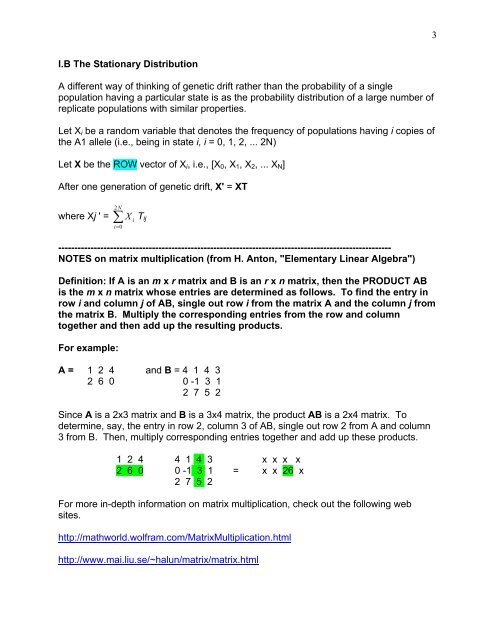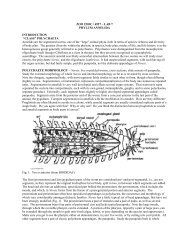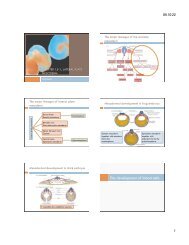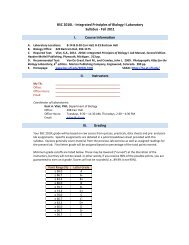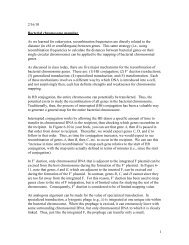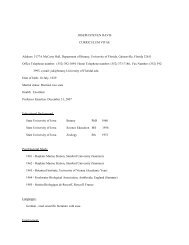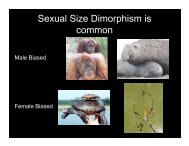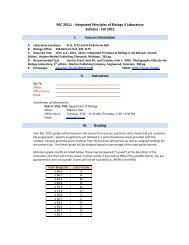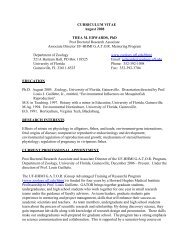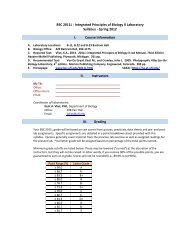Drift 2
Drift 2
Drift 2
You also want an ePaper? Increase the reach of your titles
YUMPU automatically turns print PDFs into web optimized ePapers that Google loves.
3I.B The Stationary DistributionA different way of thinking of genetic drift rather than the probability of a singlepopulation having a particular state is as the probability distribution of a large number ofreplicate populations with similar properties.Let X i be a random variable that denotes the frequency of populations having i copies ofthe A1 allele (i.e., being in state i, i = 0, 1, 2, ... 2N)Let X be the ROW vector of X i , i.e., [X 0 , X 1 , X 2 , ... X N ]After one generation of genetic drift, X' = XT2NX ii=0where Xj ' = ∑T ij-------------------------------------------------------------------------------------------------------NOTES on matrix multiplication (from H. Anton, "Elementary Linear Algebra")Definition: If A is an m x r matrix and B is an r x n matrix, then the PRODUCT ABis the m x n matrix whose entries are determined as follows. To find the entry inrow i and column j of AB, single out row i from the matrix A and the column j fromthe matrix B. Multiply the corresponding entries from the row and columntogether and then add up the resulting products.For example:A = 1 2 4 and B = 4 1 4 32 6 0 0 -1 3 12 7 5 2Since A is a 2x3 matrix and B is a 3x4 matrix, the product AB is a 2x4 matrix. Todetermine, say, the entry in row 2, column 3 of AB, single out row 2 from A and column3 from B. Then, multiply corresponding entries together and add up these products.1 2 4 4 1 4 3 x x x x2 6 0 0 -1 3 1 = x x 26 x2 7 5 2For more in-depth information on matrix multiplication, check out the following websites.http://mathworld.wolfram.com/MatrixMultiplication.htmlhttp://www.mai.liu.se/~halun/matrix/matrix.html


